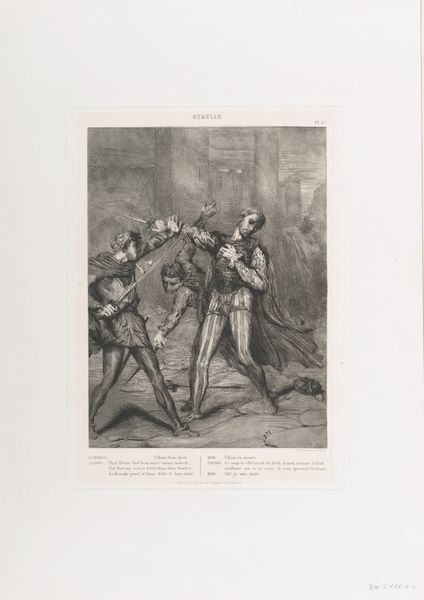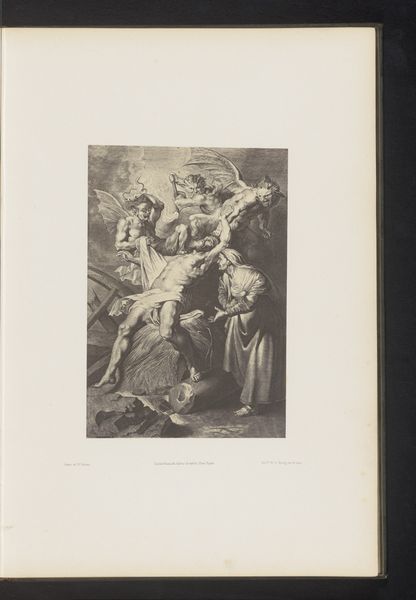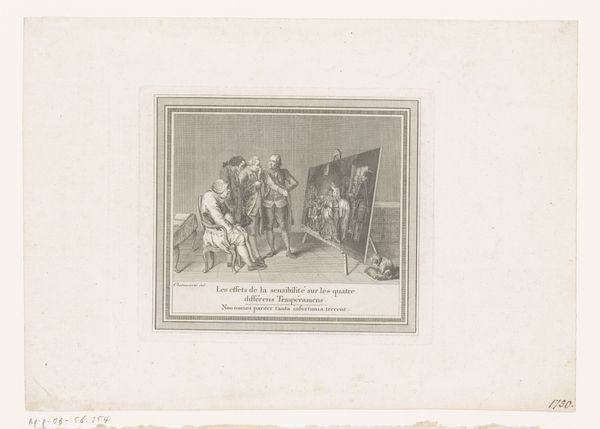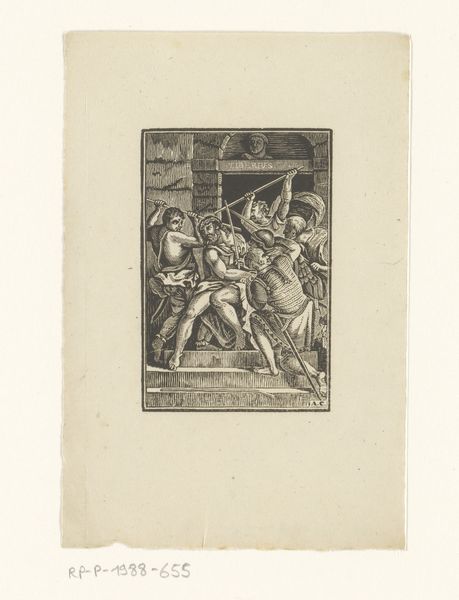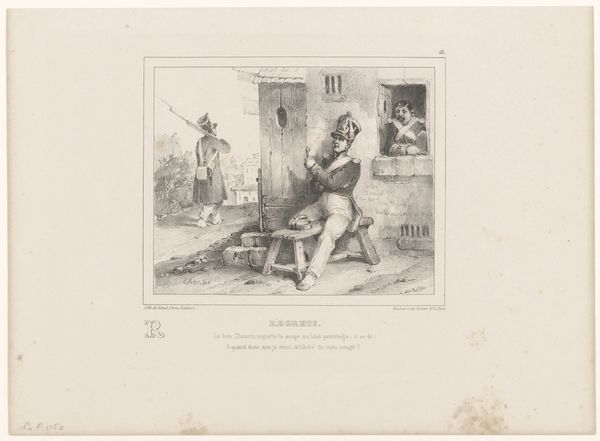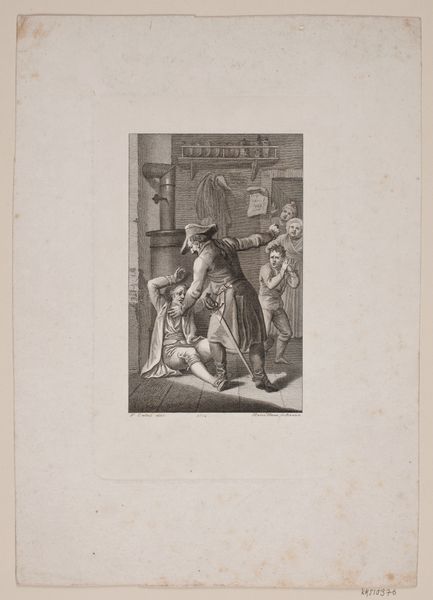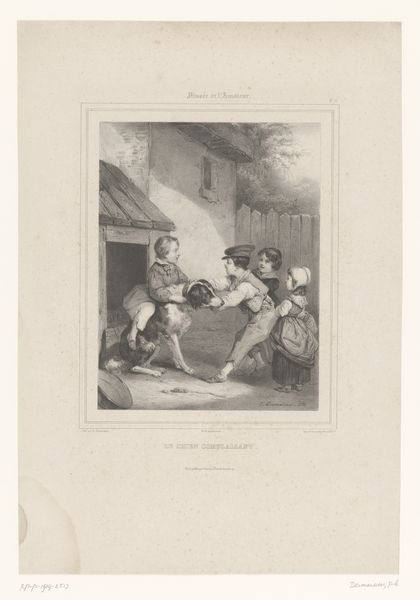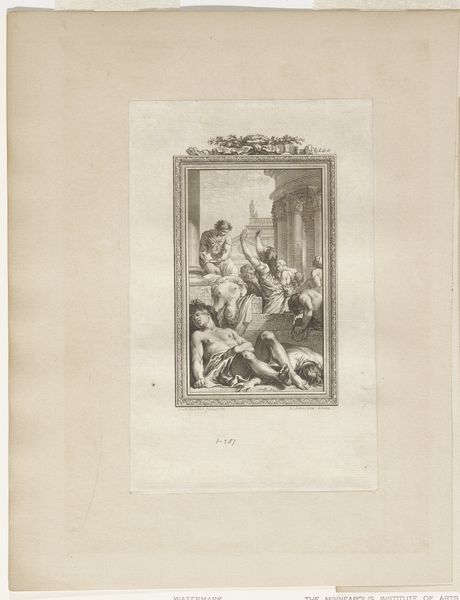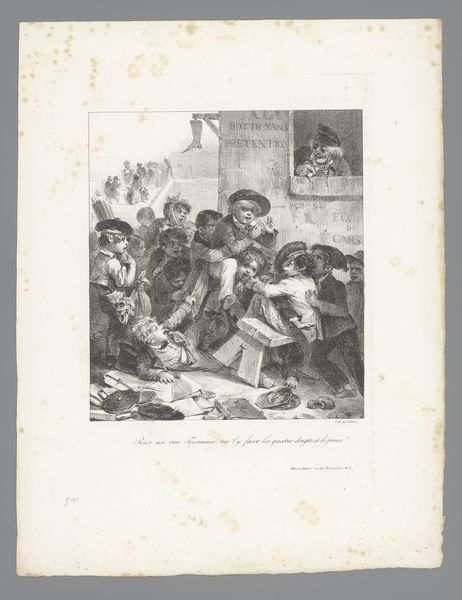
#
photo of handprinted image
#
aged paper
#
homemade paper
#
pale palette
#
ink paper printed
#
light coloured
#
white palette
#
personal sketchbook
#
watercolour illustration
#
sketchbook art
Dimensions: height 355 mm, width 269 mm
Copyright: Rijks Museum: Open Domain
Curator: "Drinkende oude en jonge soldaten," or "Drinking Old and Young Soldiers," by Auguste Raffet, created around 1827. The print depicts a group of soldiers gathered around a table, seemingly in the midst of a lively drinking session. It's currently held in the Rijksmuseum collection. Editor: It strikes me immediately as a chaotic celebration. The figures are clustered together, their gestures boisterous. There’s a palpable energy, but something also feels… a bit melancholic? Curator: Interesting observation. This print captures a slice of post-Napoleonic life. Raffet, known for his depictions of military subjects, offers a glimpse into the everyday lives of soldiers. It reflects a period grappling with the aftermath of war, navigating shifting political landscapes, and seeking camaraderie amid instability. Editor: I see that, certainly. It feels less like a glorious depiction of war and more about the reality of soldiers finding solace in shared experience. The inscription reads, "We are comrades, Frenchmen ready to moisten our throats for the ancients!"—a kind of mournful toast. But it prompts some immediate questions regarding the type of celebration they are undertaking, how it contributes to military machismo and normalizes particular (harmful?) behavior, and how this affects wider society. Curator: That reading aligns with a larger dialogue regarding the representation of military culture and the construction of masculine identity in post-revolutionary France. This image presents a vision of the ordinary soldier, rather than some Romantic hero on a battlefield. It shows these figures drinking, connecting, mourning in the face of social upheaval, but it perpetuates and normalizes harmful behaviour. This print may provide clues as to how collective trauma and memory played out at different levels of society. Editor: Indeed, there is something both timeless and deeply specific to the image. It resonates, I believe, in its portrayal of solidarity amid difficult circumstances and its normalization of such behaviour. These figures exemplify that sense of unity and offer important narratives on camaraderie but should also remind us to critically challenge the dominant culture from a radical standpoint. What were Raffet’s aims here, in choosing to portray such an ambiguous setting, what were the artist's potential biases, and how does this affect current culture? Curator: And those questions keep the dialogue alive, pushing us to constantly re-evaluate the historical contexts shaping art's creation and its ongoing interpretation. Editor: Exactly, it reminds us of art’s responsibility in reflecting the present, and the potential to shape it by understanding its roots.
Comments
No comments
Be the first to comment and join the conversation on the ultimate creative platform.


